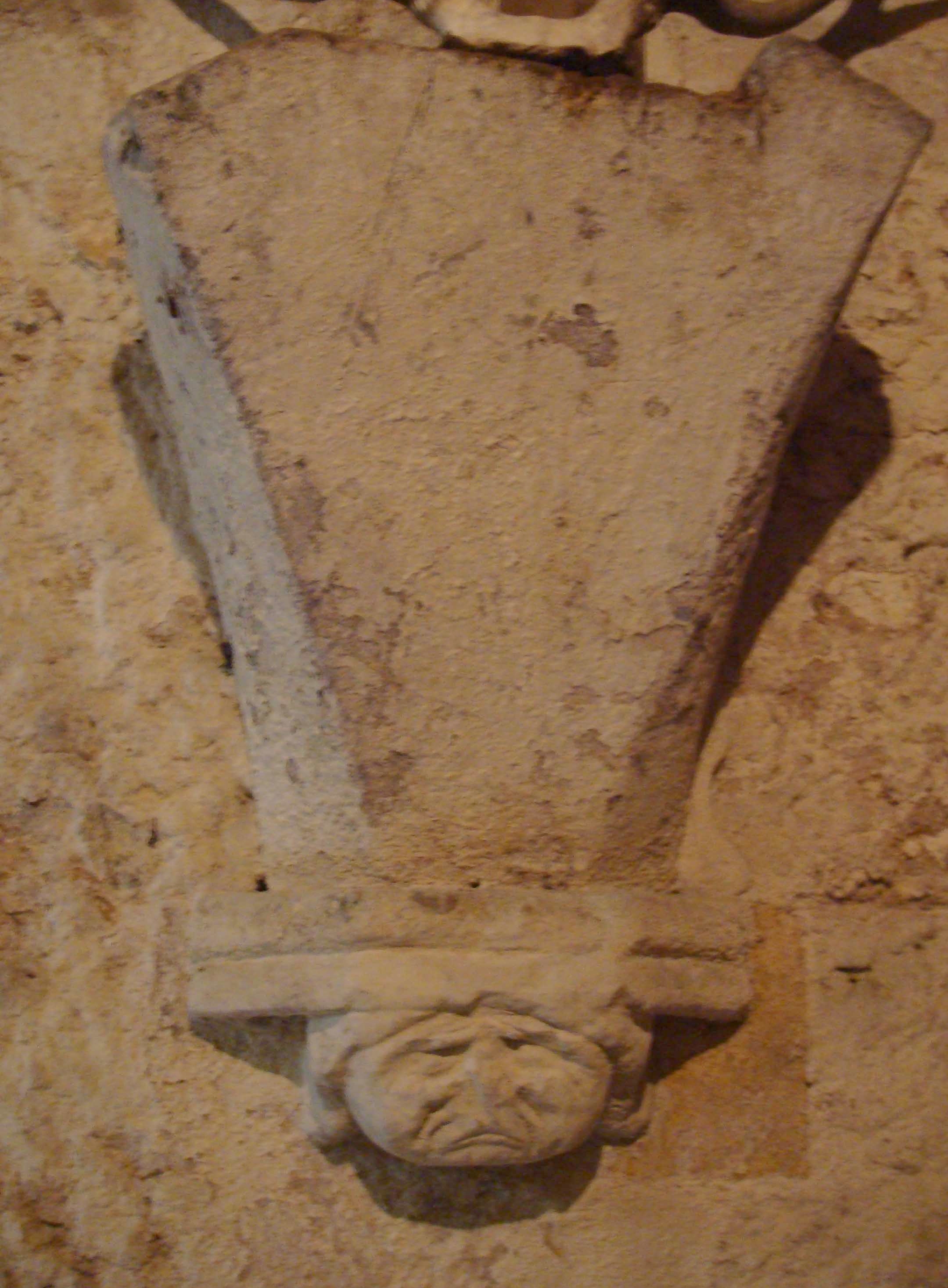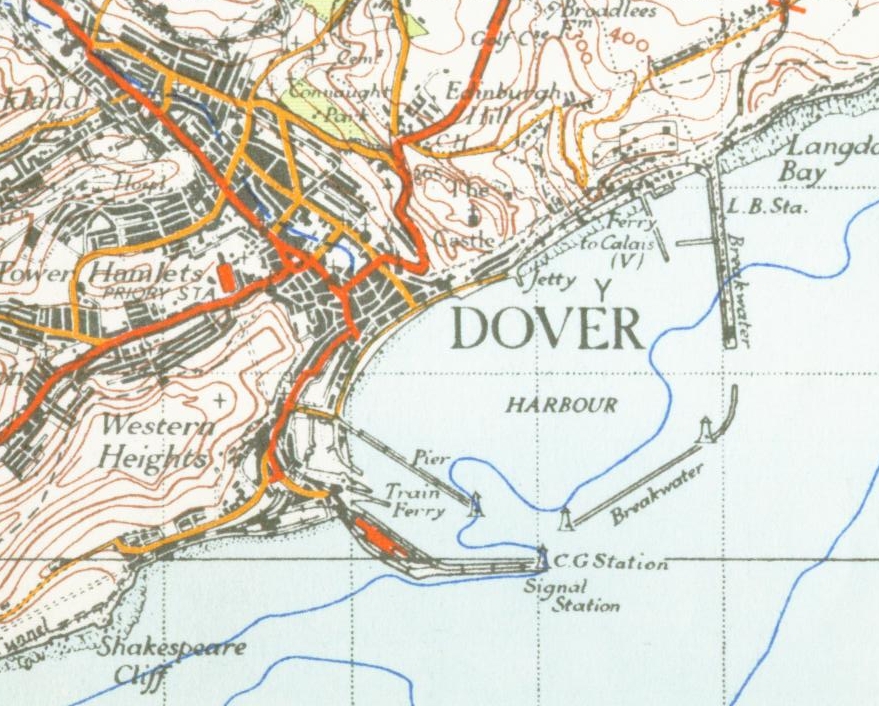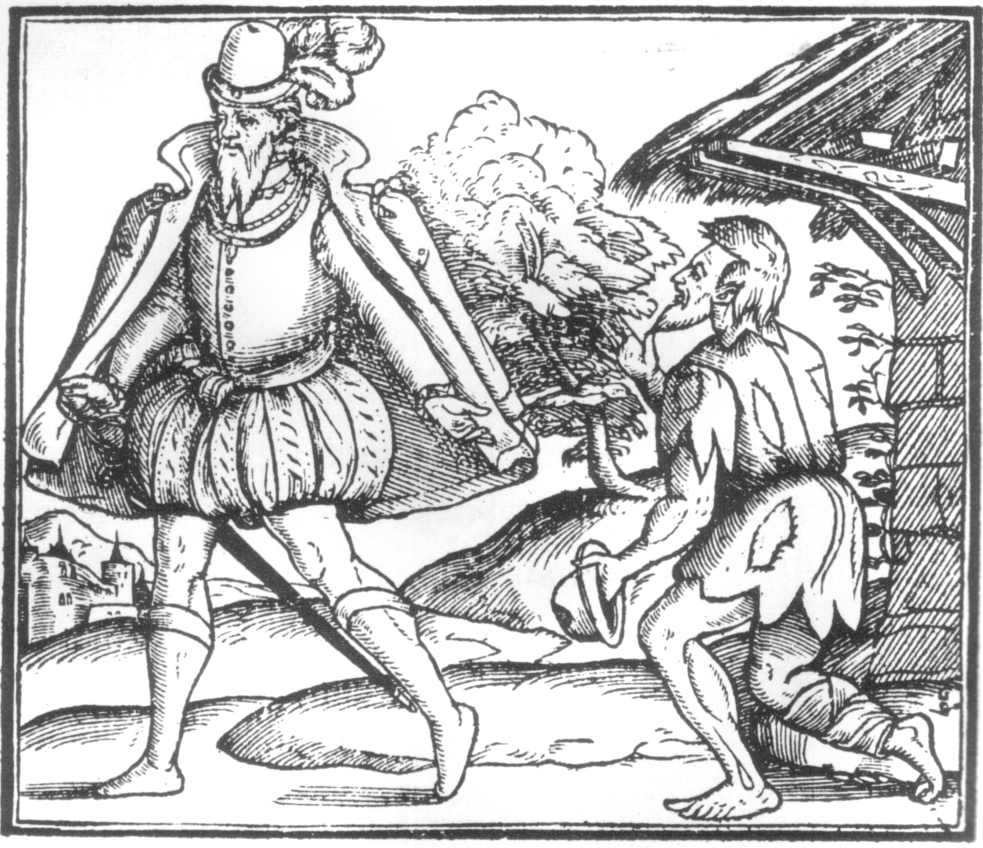|
Langdon, Kent
Langdon is a civil parish in the Dover District, Dover district of Kent, England, and contains the villages of East Langdon and West Langdon, and the hamlets of Martin, Kent, Martin and Martin Mill. Langdon was the site of Langdon Abbey which was dissolved in 1535. History The word Langdon comes from the original Old English meaning, 'Long Down' or 'Long Hill'. The name 'Langdon' is an Anglo-Saxons, Anglo-Saxon origin and one of the oldest names recorded. It is a common surname, as well as a locational name from places in Devon, Dorset, Warwickshire, Essex and Kent. However, East and West Langdon in Kent is the earliest recorded use of the place name Langdon, at the time of the 861 Saxon Charters the place was recorded as "Langandune". The original meaning of Langdon suggests that the parish lies along a 'long hill' or 'long down' between Deal, Kent, Deal and Whitfield, Kent, Whitfield. The remains of the historical Langdon Abbey lie between West Langdon and East Langdon. T ... [...More Info...] [...Related Items...] OR: [Wikipedia] [Google] [Baidu] |
Dover (district)
Dover is a local government district in Kent, England. It is named after its largest town, the port town of Dover. The council is based in Whitfield on the outskirts of Dover. The district also covers the towns of Deal, Sandwich and Walmer as well as the surrounding rural areas. The district borders Thanet District to the north, the City of Canterbury to the west, and Folkestone and Hythe District to the south-west. To the south and east, it faces the Strait of Dover. History The district was formed on 1 April 1974 under the Local Government Act 1972. It covered the whole area of four former districts and part of a fifth, all of which were abolished at the same time: * Deal Municipal Borough * Dover Municipal Borough * Dover Rural District * Eastry Rural District (except five parishes which went to Thanet) * Sandwich Municipal Borough The new district was named Dover after its largest town. Governance Dover District Council provides district-level services. Count ... [...More Info...] [...Related Items...] OR: [Wikipedia] [Google] [Baidu] |
Westenhanger
Stanford is a village and civil parish in Kent, England. It is part of the Folkestone and Hythe district. The village developed along the ancient Roman Stone Street and was divided by the construction of the M20 motorway into Stanford North and Stanford South. Stanford Windmill and parish church of All Saints are in the village. The parish includes the hamlet of Westenhanger. Folkestone Racecourse was located here; during World War II it served as the RAF Westenhanger airfield, and eventually closed for redevelopment in December 2012. Westenhanger Castle is adjacent to the racecourse. In 2023 the local authority granted planning permission for 8,500 homes at the Otterpool Park sitePlanning application Y19/0257/FH which extends from Westenhanger station to the edges of Sellindge and Lympne. Transport Westenhanger railway station Westenhanger railway station is on the South Eastern Main Line in England, serving the villages of Westenhanger and Stanford, and was near ... [...More Info...] [...Related Items...] OR: [Wikipedia] [Google] [Baidu] |
Archdeacon
An archdeacon is a senior clergy position in the Church of the East, Chaldean Catholic Church, Syriac Orthodox Church, Anglican Communion, St Thomas Christians, Eastern Orthodox Church, Eastern Orthodox churches and some other Christian denominations, above that of most clergy and below a bishop. In the High Middle Ages it was the most senior diocesan position below a bishop in the Catholic Church. An archdeacon is often responsible for administration within an archdeaconry, which is the principal subdivision of the diocese. The ''Oxford Dictionary of the Christian Church'' has defined an archdeacon as "A cleric having a defined administrative authority delegated to him by the bishop in the whole or part of the diocese.". The office has often been described metaphorically as ''oculus episcopi'', the "bishop's eye". Catholic Church In the Latin Catholic Church, the post of archdeacon, originally an ordained deacon (rather than a priest), was once one of great importance as a sen ... [...More Info...] [...Related Items...] OR: [Wikipedia] [Google] [Baidu] |
Rural Dean
In the Roman Catholic Church and the Anglican Communion as well as some Lutheran denominations, a rural dean is a member of clergy who presides over a "rural deanery" (often referred to as a deanery); "ruridecanal" is the corresponding adjective. The adjective ''rural'' does not mean the role is restricted to the countryside, but distinguishes them from the deans of cathedral chapters, which were historically in cities. In some Church of England dioceses rural deans have been formally renamed as area deans. Origins The title "dean" (Latin ''decanus'') may derive from the custom of dividing a hundred into ten tithings, not least as rural deaneries originally corresponded with wapentakes, hundreds, commotes or cantrefi in Wales. Many rural deaneries retain these ancient names.Cross, F. L., ed. (1957) ''The Oxford Dictionary of the Christian Church''. London: Oxford University Press; p. 1188. The first mention of rural deans comes from a law made by Edward the Confessor, whic ... [...More Info...] [...Related Items...] OR: [Wikipedia] [Google] [Baidu] |
Lathe (county Subdivision)
A lathe (; Old English: ''lǽð''; Latin: ''lestus'') formed an administrative country subdivision of the county of Kent, England, from the Anglo-Saxon period, until it fell out of general practical use in the early twentieth century. Etymologically, the word ''lathe'' may derive from a Proto-Germanic root meaning "land" or "landed possession", possibly cognate with the Greek λᾰ́τρον (''latron'', "payment"). List By the late eleventh century the traditional area of West Kent comprised three lathes: * Lathe of Aylesford * Lathe of Milton * Lathe of Sutton while East Kent comprised four lathes: * Lathe of Borough * Lathe of Eastry * Lathe of Lympne * Lathe of Wye Of these, Sutton-at-Hone and Milton sometimes ranked as half-lathes.J. E. A. Jolliffe, "The Hidation of Kent", in ''English Historical Review'', Vol. 44, No. 176 (Oct., 1929), pp. 612-61/ref> In the thirteenth century Kent had a total of five lathes: * the lathes of Borough and Eastry merged to form the L ... [...More Info...] [...Related Items...] OR: [Wikipedia] [Google] [Baidu] |
Lathe Of St
A lathe () is a machine tool that rotates a workpiece about an axis of rotation to perform various operations such as cutting, sanding, knurling, drilling, Deformation (engineering), deformation, facing (machining), facing, Threading (manufacturing), threading and turning, with tools that are applied to the workpiece to create an object with rotational symmetry, symmetry about that axis. Lathes are used in woodturning, metalworking, metal spinning, thermal spraying, reclamation, and glass-working. Lathes can be used to shape pottery, the best-known design being the Potter's wheel. Most suitably equipped metalworking lathes can also be used to produce most Solid of revolution, solids of revolution, plane surfaces and screw threads or helix, helices. Ornamental lathes can produce three-dimensional solids of incredible complexity. The workpiece is usually held in place by either one or two ''centers'', at least one of which can typically be moved horizontally to accommodate var ... [...More Info...] [...Related Items...] OR: [Wikipedia] [Google] [Baidu] |
Hundred (county Subdivision)
A hundred is an administrative division that is geographically part of a larger region. It was formerly used in England, Wales, some parts of the United States, Denmark, Sweden, Finland, Norway, and in Cumberland County, New South Wales, Cumberland County in the British Colony of New South Wales. It is still used in other places, including in Australia (in South Australia and the Northern Territory). Other terms for the hundred in English and other languages include ''#wapentake, wapentake'', ''herred'' (Danish and Bokmål, Bokmål Norwegian), ''herad'' (Nynorsk, Nynorsk Norwegian), ''härad'' or ''hundare'' (Swedish), ''Harde'' (German), ''hiird'' (North Frisian language, North Frisian), ''kihlakunta'' (Finnish), and ''cantref'' (Welsh). In Ireland, a similar subdivision of counties is referred to as a Barony (Ireland), barony, and a hundred is a subdivision of a particularly large townland (most townlands are not divided into hundreds). Etymology The origin of the division of ... [...More Info...] [...Related Items...] OR: [Wikipedia] [Google] [Baidu] |
Dover
Dover ( ) is a town and major ferry port in Kent, southeast England. It faces France across the Strait of Dover, the narrowest part of the English Channel at from Cap Gris Nez in France. It lies southeast of Canterbury and east of Maidstone. The town is the administrative centre of the Dover District and home of the Port of Dover. Archaeological finds have revealed that the area has always been a focus for peoples entering and leaving Great Britain, Britain. The name derives from the River Dour that flows through it. In recent times the town has undergone transformations with a high-speed rail link to London, new retail in town with St James' area opened in 2018, and a revamped promenade and beachfront. This followed in 2019, with a new 500m Pier to the west of the Harbour, and new Marina unveiled as part of a £330m investment in the area. It has also been a point of destination for many English Channel migrant crossings (2018-present), illegal migrant crossings. The Port ... [...More Info...] [...Related Items...] OR: [Wikipedia] [Google] [Baidu] |
Kent Police
Kent Police is the territorial police force responsible for policing the and approximately 1.8 million inhabitants of Kent, a county in South East England. History On 14 January 1857, a 222-strong 'Kent County Constabulary' was formed under Chief Constable John Henry Hay Ruxton. The first headquarters was at Wrens Cross, Stone Street, Maidstone, and was rented for use by the police until 23 November 1860, when the force purchased it for £1,200. It was responsible for policing those parts of the county not already under the jurisdiction of local Borough police forces. In 1860, the initial uniform of a frock coat and a high hat was replaced by a long uniform tunic and shako hat and constables were issued with a rattle and truncheon. In 1885, whistles were introduced. In 1897, the recognisable custodian helmet was introduced. In 1974, the familiar Cox Comb helmet replaced the Rose Top helmet with a new helmet plate. On 1 April 1889, Kent County Constabulary absorbed the boroug ... [...More Info...] [...Related Items...] OR: [Wikipedia] [Google] [Baidu] |
Poor Law Amendment Act 1834
The Poor Law Amendment Act 1834 (4 & 5 Will. 4. c. 76) (PLAA) known widely as the New Poor Law, was an Act of Parliament (United Kingdom), act of the Parliament of the United Kingdom passed by the British Whig Party, Whig government of Charles Grey, 2nd Earl Grey, Earl Grey denying the right of the poor to subsistence. It completely replaced earlier legislation based on the Poor Relief Act 1601 (43 Eliz. 1. c. 2) and attempted to fundamentally change the social security, poverty relief system in England and Wales (similar changes were made to the Scottish Poor Laws, poor law for Scotland in 1845). It resulted from the 1832 Royal Commission into the Operation of the Poor Laws, which included Edwin Chadwick, John Bird Sumner and Nassau William Senior. Chadwick was dissatisfied with the law that resulted from his report. The Act was passed two years after the Reform Act 1832, Representation of the People Act 1832 which extended the Suffrage, franchise to middle-class men. Some histo ... [...More Info...] [...Related Items...] OR: [Wikipedia] [Google] [Baidu] |
Poor Relief
In English and British history, poor relief refers to government and ecclesiastical action to relieve poverty. Over the centuries, various authorities have needed to decide whose poverty deserves relief and also who should bear the cost of helping the poor. Alongside ever-changing attitudes towards poverty, many methods have been attempted to answer these questions. Since the early 16th century legislation on poverty enacted by the Parliament of England, poor relief has developed from being little more than a systematic means of punishment into a complex system of government-funded support and protection, especially following the creation in the 1940s of the welfare state. Tudor era In the late 15th century, Parliament took action on the growing problem of poverty, focusing on punishing people for being " vagabonds" and for begging. In 1495, during the reign of King Henry VII, Parliament enacted the Vagabonds and Beggars Act 1494. This provided for officers of the law to ... [...More Info...] [...Related Items...] OR: [Wikipedia] [Google] [Baidu] |








